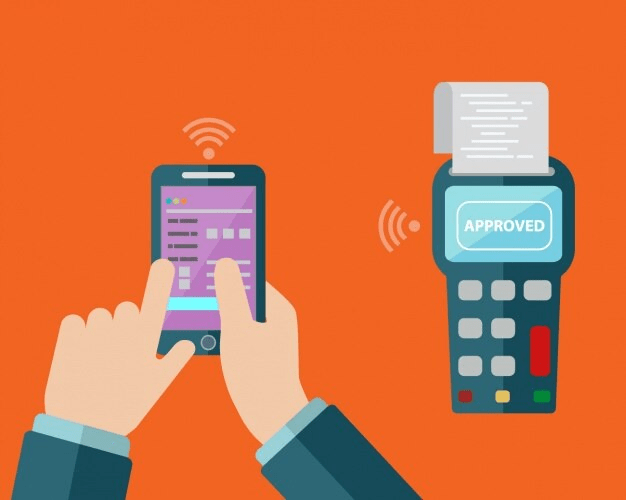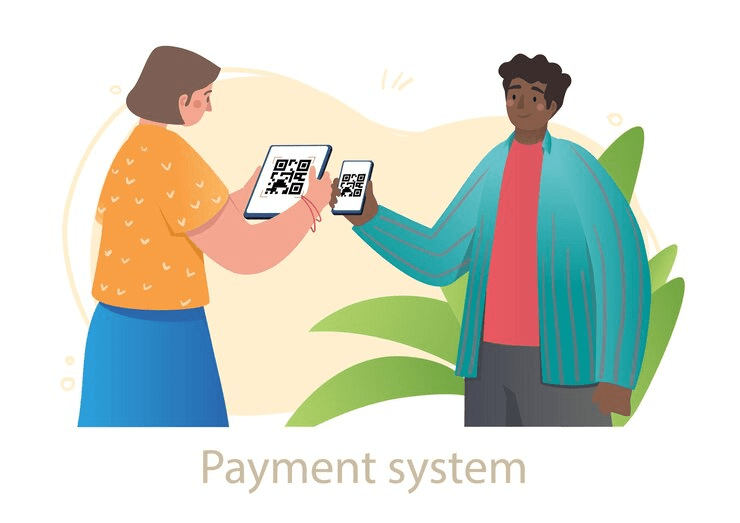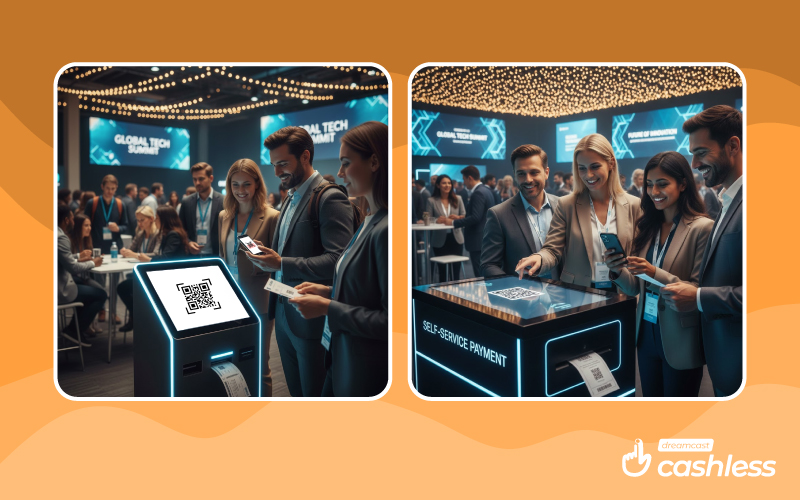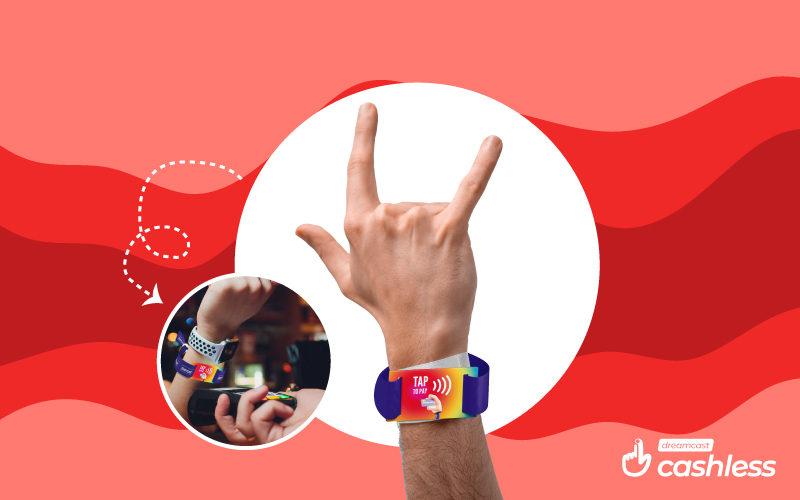Cashless payment methods have become a necessary component of our daily lives in this cutthroat environment. Near Field Communication (NFC) and QR code payment technologies are two of the most revolutionary of these systems; they enable safe, contactless transactions via smartphones and other devices. These technologies, which support a large number of e-wallet transactions, are becoming more and more well-known worldwide because to their increased security, speed, and ease of use. We’ll examine the operation of NFC and QR code payments, their special benefits, and why they are the way of the future for e-wallet transactions in this blog.
NFC and QR Code Payment Systems: What Are They?
The NFC Payment System

When two devices are close to one another, usually less than 4 cm, they can communicate information via a wireless communication method called NFC (Near Field Communication). It is most frequently utilized in contactless payment systems, in which customers start a transaction by merely tapping their card or smartphone that supports NFC against a suitable reader. Since NFC technology is built into the majority of advanced mobile, it is a normal form of payment. Applications that allow users to link their bank cards to their digital wallets for smooth transactions, such as Apple Pay, Google Wallet, and Samsung Pay, frequently employ NFC payments.
QR Code Payment System

Two-dimensional barcodes known as QR codes (Quick Response codes) have the ability to compactly store information, including payment data. A payment link is launched when a user uses the camera on their smartphone or a dedicated app to scan a QR code. This link takes the user to a transaction screen where they may finish the payment. In nations like China, where systems like Alipay and WeChat have incorporated QR code payments into daily life, the practice is especially common.
Compared to NFC, QR code payments are more widely available since they don’t require specific gear. Because it is easy to use and inexpensive to set up, this payment method has gained popularity.
Benefits of NFC and QR Code Payment Systems
- Speed and Convenience
With just a tap, transactions may be finished in a matter of seconds, making NFC one of the quickest payment options. The time spent on conventional point-of-sale (POS) transactions is greatly decreased when users scan a code to swiftly launch a payment link.
- Increased Security
Tokenization, which replaces sensitive data with a distinct digital identification, adds extra security layers to NFC payments and gives retailers and customers peace of mind.
- Broad-Based Compatibility
While QR code payments may be utilized with any smartphone camera and do not require specific hardware, NFC payments are compatible with the majority of contemporary smartphones and point-of-sale systems.
- Cost-Effectiveness
Because QR code payment systems don’t require complicated equipment or considerable setup, they are very inexpensive and perfect for small and medium-sized enterprises.
- Contactless Transaction
Due to hygienic concerns, contactless payment has become increasingly popular. NFC and QR code technologies solve this issue by doing away with the necessity for in-person interaction at the point of sale.

How E-Wallet Transactions Use NFC and QR Code Payments
1. Linking Payment Information:
Customers link their credit card, debit card, or bank account to their electronic wallet. These details remain safe and encrypted while using NFC. A similar configuration is utilize for QR codes within the application, which creates a different code for every transaction.
2. The Transaction’s Start:
- NFC Payments: When using an NFC-enabled payment terminal, users hold their mobile close to it. Once the device and terminal are in communication, the transaction is finished.
- Payments by QR Code: When customers scan the QR code at the point of sale, their e-wallet app displays the payment details. After that, the user approves the payment to finish the transaction.
3. Confirmation and Receipt:
The user can consult the confirmation message or receipt they receive in their e-wallet app after making the payment, if necessary.
Why Future E-Wallet Transactions Will Be Shaped by NFC and QR Code Payments
Acceptance and Growth Worldwide
Whether it is a music concert or a large cashless food event, most event organizers are increasingly adopting NFC and QR code payments. This increasing acceptance suggests that digital wallets may eventually completely replace conventional payment systems.
Wearables and IoT integration
With the Internet of Things (IoT), NFC technology has created new opportunities by facilitating easy payments via wearable technologies like smartwatches. This adaptability points to a future of fully integrated payment systems and is consistent with the rising trend toward smart gadgets.
Cross-Border Transaction Support
Because they make currency translation and payment processing simple, QR codes are particularly useful for international payments. In areas with inadequate banking infrastructure, QR payments are becoming more and more popular, opening the door to international digital payment options.
Improving Security Procedures
Tokenization, biometric verification, and multi-factor authentication are all included in NFC and QR code payments to allay consumer fears of fraud. These technologies are a good substitute for conventional card payments as they are getting more and more secure against online attacks.
Enhanced User Experience
Both NFC and QR codes are setting the standard for e-wallet use with their quick and easy checkout processes. Users may touch and pay without launching an app using NFC, while QR codes offer a comparable experience with less human effort, increasing user happiness.
Potential Challenges and Considerations
Infrastructure Needs
QR code solutions require dependable internet connectivity and sufficient smartphone battery life, which might be difficult in some places, whereas NFC payments require compatible point-of-sale systems.
Privacy Issues
Users using NFC and QR code transactions must save private information on their phones. Secure authentication and encryption techniques, however, have greatly reduced these concerns
Adoption by Consumers
Businesses must make educational efforts to promote broad usage of NFC and QR payments since, despite their popularity in many locations, some customers are still not aware of these technologies.
Alternative Payment Methods
Other digital payment techniques, such as online banking transfers are competing with NFC and QR code payments as mobile payment alternatives expand. These methods may provide clear benefits in certain circumstances.
Combining NFC and QR Code Technologies
Combining NFC and QR code payment technology has enormous potential to create a quick, safe, and ubiquitous digital payment solution. Imagine an e-wallet that, without the need for specialist equipment, can create QR codes for fast payments and process NFC for tap-and-go transactions. By combining these technology, you create a flexible and extremely secure payment environment. With the integration of NFC and QR code technology, e-wallet transactions appear to have a bright future. The e-wallet platforms will become more adaptable, integrating both systems to guarantee usability, security, and accessibility for a wider range of users.
Conclusion
As NFC and QR code payment systems develop further, they are raising the bar for e-wallet transaction speed, convenience, and security. Future e-wallets that combine these technologies should provide consumers with a complete, adaptable, and widely recognized digital payment option. The future of e-wallets is not only easy but also more secure and flexible, thanks to features like tap-to-pay NFC technology and flexible QR code scanning. Businesses and consumers alike may prosper in a cashless, digital-first society by adopting these technologies. NFC and QR code payment systems are at the forefront of e-wallet advancements in a fast digital market. Companies that incorporate these technologies into their payment methods may increase efficiency, security, and customer satisfaction—all of which are critical for being competitive in the digital era.






